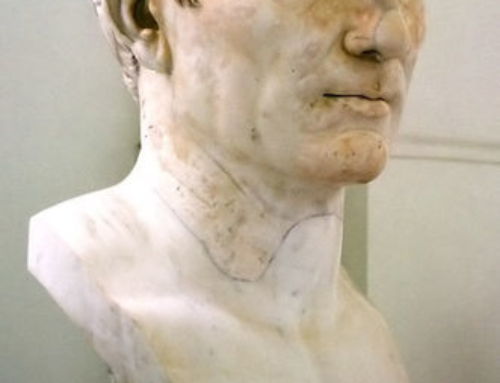One of the most intriguing details about the reception of my book Mystery of the Magi has been the tenacity with which three different groups of people have clung to their preferred myths about the Magi. In fact, it has been so interesting that I’m thinking of a lisping sequel called The Myth-tery of the Magi.
To explain what I mean I should first explain what I mean by “myth” because it is a term we throw around both ignorantly and knowledgeably. In fact, on pondering the response to Mystery of the Magi I’ve come to realize there is myth and anti-myth, and both inhabit the same mind space.
By “myth” I mean “a story by which we experience truth through emotion.” The emotion we experience may be fear, awe, love, delight, laughter or tears. As the heart is moved, we experience a truth beyond articulation.
Anti-myth is “a story that shields us from the experience of truth.” In other words, it does exactly the opposite of myth.
The definitions become even more complicated because it is possible to have what I call a “factual myth” as well as “fanciful myth”. A factual myth is a story that actually happened, but in the re-telling works on us as myth. A heroic real life event begins to be related in a way that filters the events, simplifying and making the person into a hero. An example is Mel Gibson’s film Hacksaw Ridge in which an ordinary soldier becomes a hero. It really happened, but the story becomes myth because we interact with the story in the same way that we would with a fictional mythic story.
To complicate things further, both factual myth and fanciful myth can operate as myth and anti-myth. In other words, a story that really happened can be used to shield us from the deeper truths or operate to open our hearts and minds to the deeper truths. A fanciful myth can do the same thing. It can open our hearts and minds to experience deeper truths or it can work to shield us from the deeper truths.
In my work on the story of the wise men I have discovered two very interesting anti-myths about the story. One is found among the skeptical scholars and the other among what I call “believers with blinders”
The “believers with blinders” wish to hold on to the version of the magi story that has come down to us over two thousand years of accumulating tradition. This is the version that three kings from faraway lands named Balthasar, Melchior and Caspar went on long journeys across the desert sands on camels. They were from Africa, Asia and Persia and they were young, middle aged and old. The brought mystical gifts and followed a magical star and arrived on Christmas night along with the rustic shepherds to worship the Christ child in a stable surrounded by the ox and ass.
This is a charming story, but it has little to do with the gospel accounts. At best the gospel account in Luke and Matthew are a foundation for the developed story.
The believers with blinders prefer this anti-myth to the truth of the story–both the factual truth and the theological truths. The events surrounding the Nativity of Our Lord were actually far more complicated and the theological truths we glean from the events are not as straightforward as we might like.
Threatened by the truth the believers with blinders retreat into the security of their traditional myth.
What is most surprising is that this attitude is held not only among “tradition bound Catholics” but among conservative Protestants. A Bible believing used-to-be fundamentalist friend listened to my presentation of the factual story of the Magi and replied, “Yes, but I like the other version better.”
The second group who cling to their anti-myth are the Biblical scholars. Their anti-myth is one that deconstructs the fanciful myth of the believers with blinders. They rightly see that the elaborate nativity myth is full of fanciful speculation, but they go to the other extreme and dispose of the nativity stories completely–they reject the historicity of the nativity stories wholesale, when in fact, all they should be rejecting are the centuries old accumulations and accretions to the story.
They too are threatened by the historical truth of the story. Their anti-myth is a shield from the truth just as much as the believers with blinders’ anti-myth.
Both sides cling to their anti-myths and resent them being taken away as a child might yell if you snatch their lollipop.
The fact is, when dealing with Biblical stories we are dealing with what I called “factual myth”. The stories work on us as myth but as C.S.Lewis pointed out “they really happened.” This is something I deal with at more length in my book Romance of Religion. The story of the Magi communicates wonderful human and theological truths, but these truths are amplified and made more powerful by the fact that there really were magi who went on a difficult journey to find the Christ child.
In Mystery of the Magi I have cut through all the accumulated legendary material that has grown up around the story of the wise men and looked into the geographical, historical, cultural, political, religious and economic context to discover who the wise men really were and why they went on their journey.
The frustrating thing about the reception of the book is that both the believers with blinders and the skeptical scholars have drawn back from my findings. No one has, as yet, punched holes in the book’s proposal, but the silence has been deafening.
This is a shame because both the quest for historical veracity and the search for theological lessons are strengthened by every honest quest for truth.







My wife Margo started reading your book on the Magi as soon as we returned home from your reception. She loves it!. I will start on it as soon as she is done. God bless.
[…] confusion brings to mind an article by Father Dwight Longenecker called, “I Want My Mythic Lollipop!” In it, he talks about the myth and anti-myth; myth being “a story by which we experience truth […]